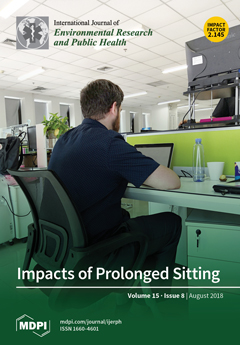About half of Ethiopians belong to the Orthodox Tewahedo religion. Annually, more than 200 days are dedicated to religious fasting, which includes abstaining from all types of food, animal source foods, and water. However, the association of fasting with undernutrition remains unknown in
[...] Read more.
About half of Ethiopians belong to the Orthodox Tewahedo religion. Annually, more than 200 days are dedicated to religious fasting, which includes abstaining from all types of food, animal source foods, and water. However, the association of fasting with undernutrition remains unknown in Ethiopia. Therefore, dietary pattern and nutritional status of lactating women during lent fasting and non-fasting periods were studied, and predictor variables for maternal underweight were identified. To achieve this, lactating mothers in lent fasting (
N = 572) and non-fasting (
N = 522) periods participated from rural Tigray, Northern Ethiopia. Average minimum diet diversity (MDD-W) was computed from two 24-h recalls, and nutritional status was assessed using body mass index (BMI). Binary logistic regression was used to identify potential predictors of maternal underweight. Wilcoxon signed-rank (WSRT) and McNemar’s tests were used for comparison of the two periods. The prevalence of underweight in fasting mothers was 50.6%. In the multivariate logistic regression model, younger age, sickness in the last four weeks preceding the survey, fasting during pregnancy, lactation periods, grandfathers’ as household decision makers, previous aid experience, non-improved water source, and not owning chicken were positively associated with maternal underweight. In WSRT, there was no significant (
p > 0.05) difference on maternal body weight and BMI between periods. The average number of meals, diet diversity, and animal source foods (ASFs), consumption scores were significantly increased in non-fasting compared to fasting periods in both fasting and non-fasting mothers (
p < 0.001,
p < 0.05, and
p < 0.001, respectively). Consumption of dark green leafy vegetables was higher in the fasting period (11%) than non-fasting (3.6%), in the study population. As a conclusion, Ethiopian Orthodox fasting negatively affected maternal nutritional status and dietary pattern in rural Tigray, Northern Ethiopia. To reduce maternal malnutrition in Ethiopia, existing multi-sectoral nutrition intervention strategies, should include religious institutions in a sustainable manner.
Full article





